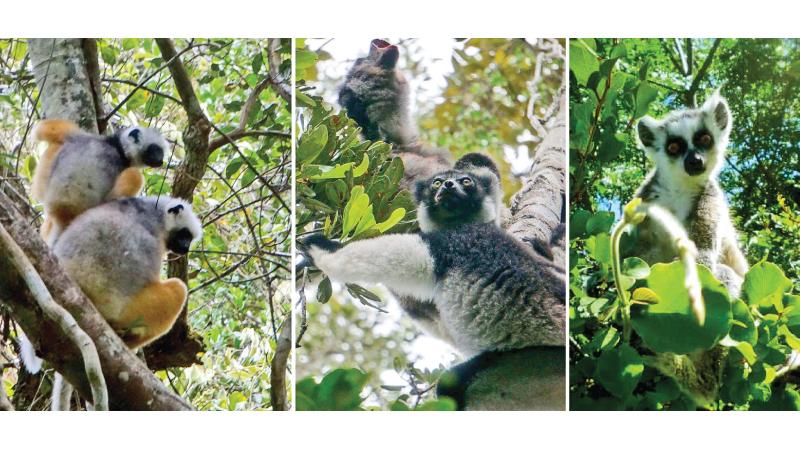
Lemurs are primates from Madagascar, an African Island. The family consists of over 100 different species and new ones keep getting ‘discovered’ regularly. They are more closely related to the loris (found in Sri Lanka) than to monkeys. While most Sri Lankans first think of Madagascar as a hub for gem trade, the island also has unique wildlife.
Lemurs are highly varied in appearance and habitat. The smallest is the Madame Berthe’s lemur that measures four inches. Giant lemurs, as massive as gorillas existed until 500 years ago but were hunted to extinction by humans.
The ring-tailed lemur cannot be mistaken with a furry, striped tail. Sifakas leap through the trees and can dance, the panda coloured indri is the largest. As for striking appearance - there are the blue-eyed black lemur and elusive goblin-like aye-aye which uses a long middle finger to dig for bugs among tree-barks and the source of much superstition.
In terms of vocalisation and social skills, Dr. Laura Bolt, primatologist said this about ringtail lemurs, “They have one contact call called the “hmm” which not only keeps them close to their other group members, but helps lemurs stay physically close to those in the group that they have closer relationships with. In human terms, it could be thought of as a “hello friend, stay close” call.”
Lemurs are more nocturnal than monkeys. They eat fruits and bugs, but the diet depends on the species and according to paleontologist Laurie Godfrey, “They have dietary preferences but also have a fair amount of flexibility”. Sifakas have been known to crush millipede to use as medicine to deter bugs.
Some local cultures have practices that militate against hunting lemurs (fady). And certain tribes view different lemurs as ancestral figures. Overall, the outstanding diversity of Madagascar and forest lore behind lemurs is truly amazing.
